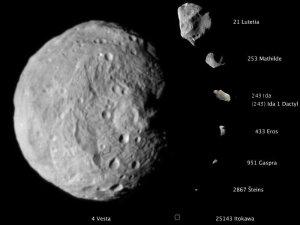
Deep Impact
No need to worry about about whether or not an asteroid will beading our way any time soon—because that’s the job the NASA’s newest office. The federal space agency is apparently creating an asteroid detection program. Specifically, they are making an office dedicated to cataloging and studying near Earth projectiles as a means of ensuring we know if one comes heading our way.
Moreover, the division, called the Planetary Defense Coordination Office (PCDO), will be responsible for assisting other government agencies in the event that our planet is en route to a massive collision with a comet or asteroid.
And it’s about time, as according to NASA, nearly 1,500 near-Earth objects are detected each year. To date, more than 13,500 near-Earth objects have been discovered, with 95 percent of them having been discovered after NASA officially began tracking them in 1998.

“The formal establishment of the Planetary Defense Coordination Office makes it evident that the agency is committed to perform a leadership role in national and international efforts for detection of these natural impact hazards, and to be engaged in planning if there is a need for planetary defense,” said Lindley Johnson, lead program executive for the PCDO, in a statement.
“Asteroid detection, tracking and defense of our planet is something that NASA, its interagency partners, and the global community take very seriously,” said John Grunsfeld, associate administrator for NASA’s Science Mission Directorate in Washington.
And we should, because it could literally mean the difference between life and death.
Goals
The agency will ultimately be responsible for determining how Earth can defend itself against asteroids, or develop the necessary technologies that will enable us to do so. Such technologies many include plans that will allow us to redirect, deflect, or incinerate objects on a collision course.
Current methods being studied include a ‘gravity tractor method’ as a way to use the mass of another object to pull the asteroid from its collision course. Should the defense strategies prove to be difficult or near impossible, NASA will thus tap its partner agencies and government entities to develop efficient emergency response initiatives that will address impact
and its aftermath.